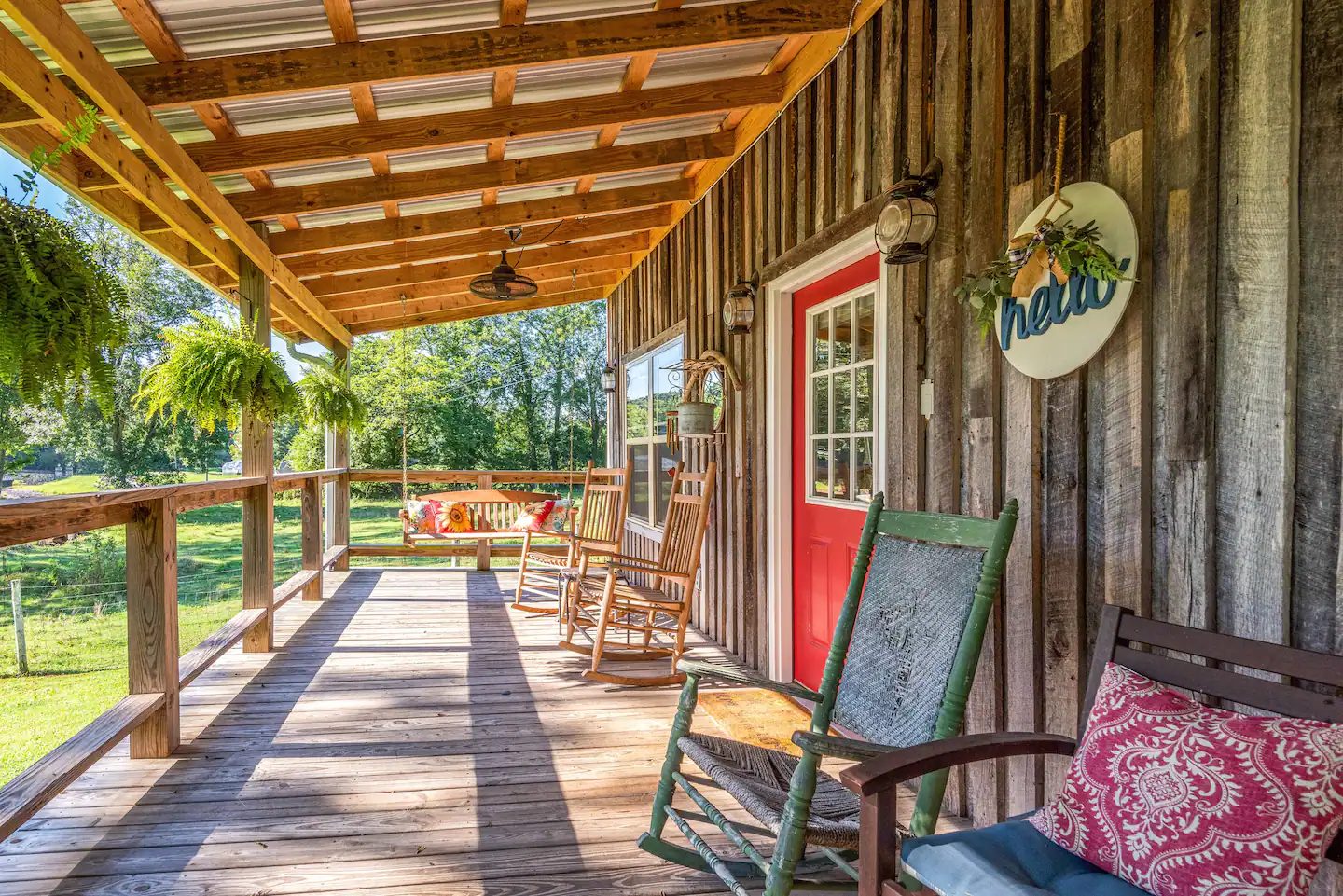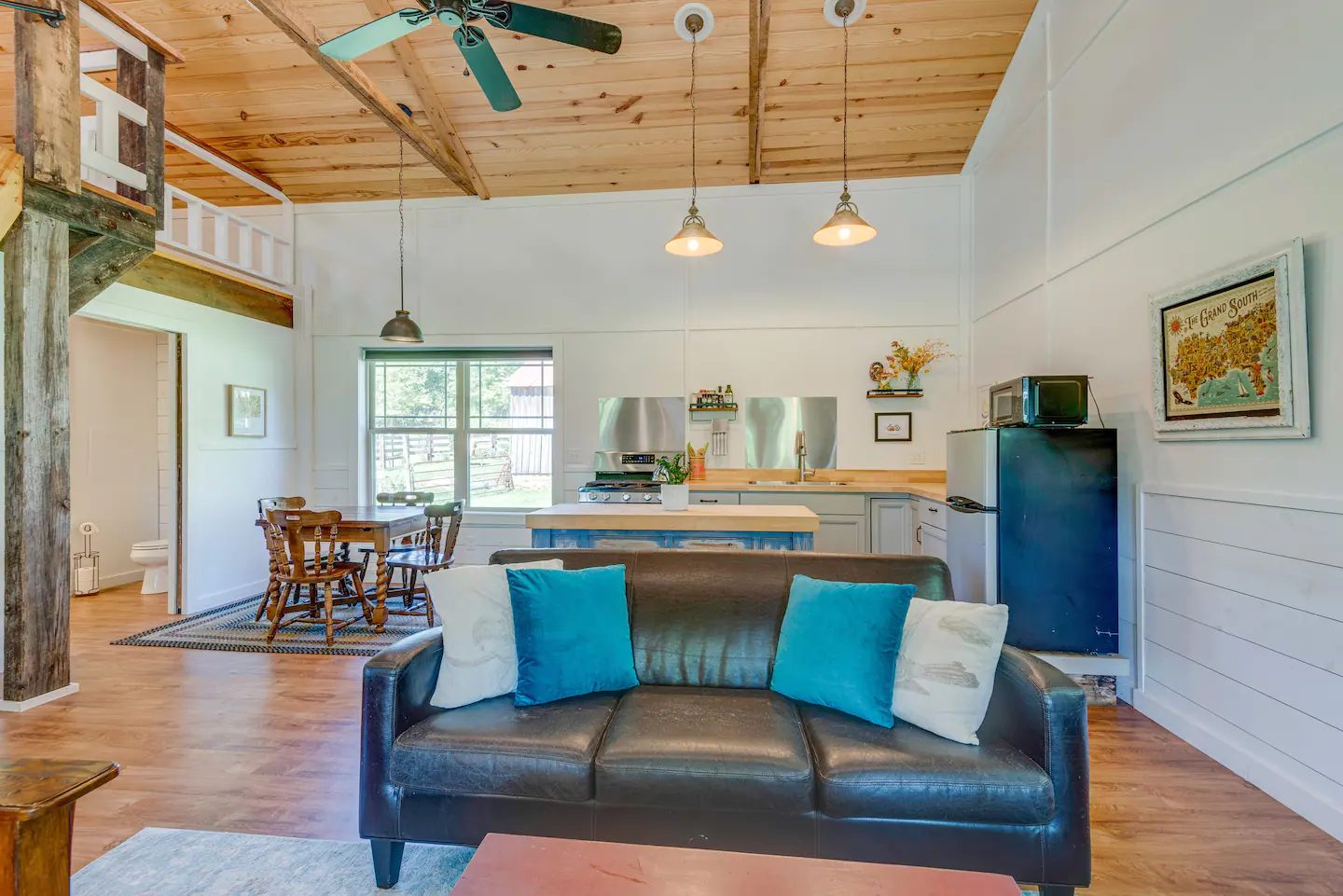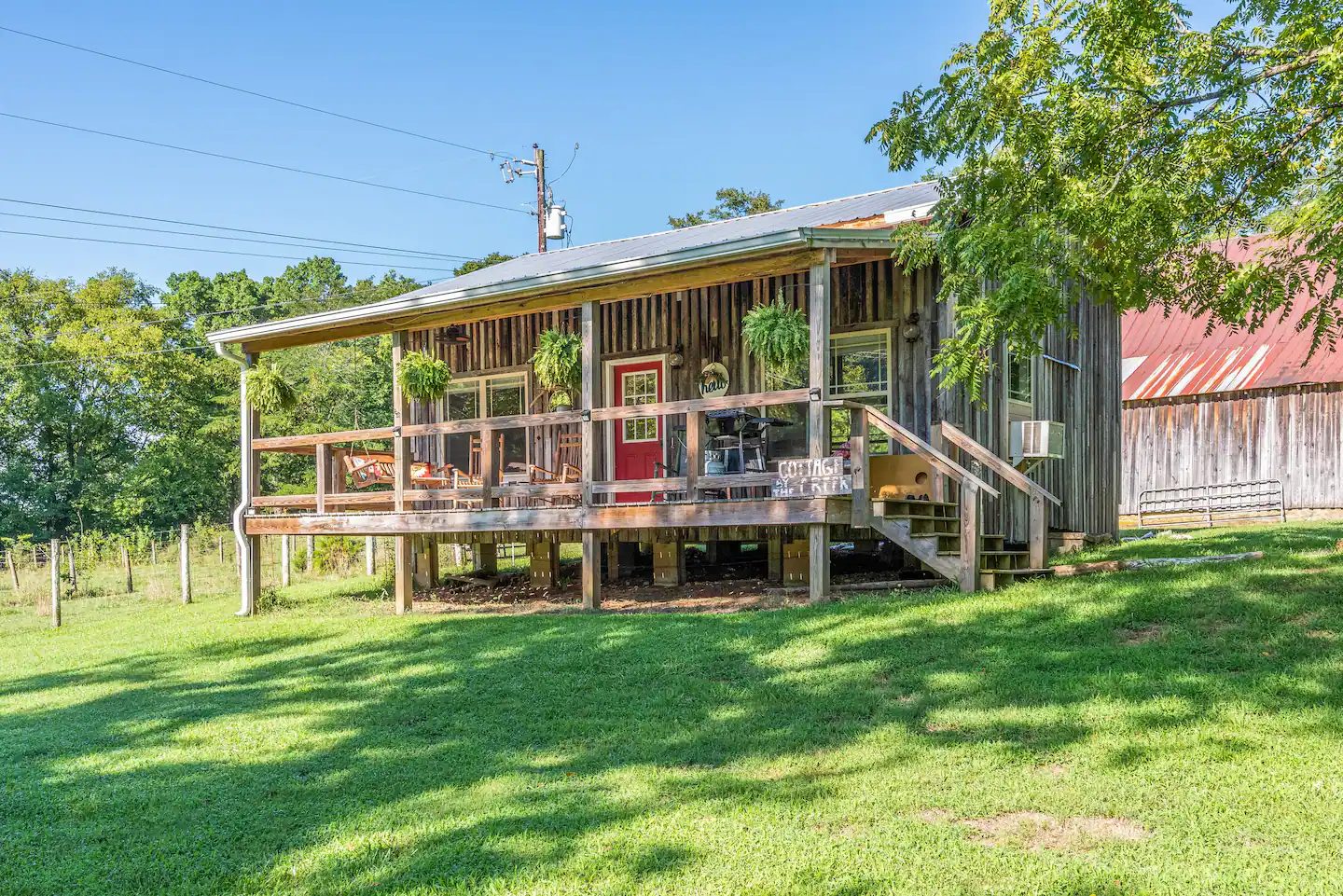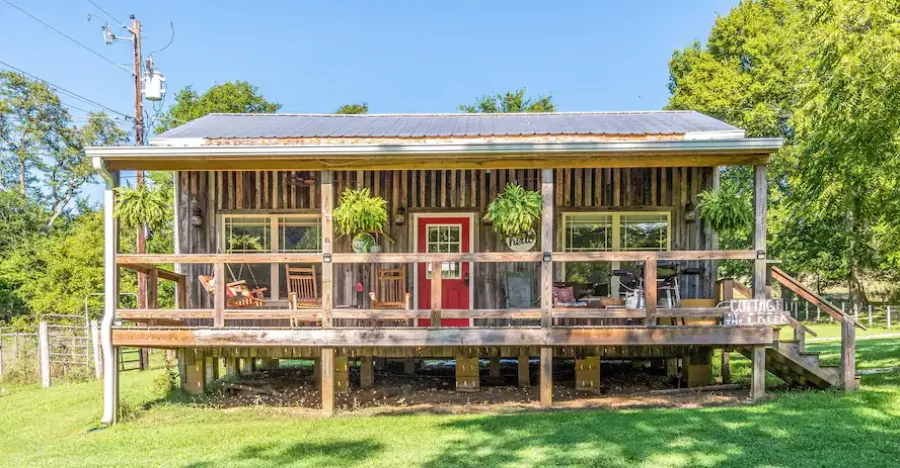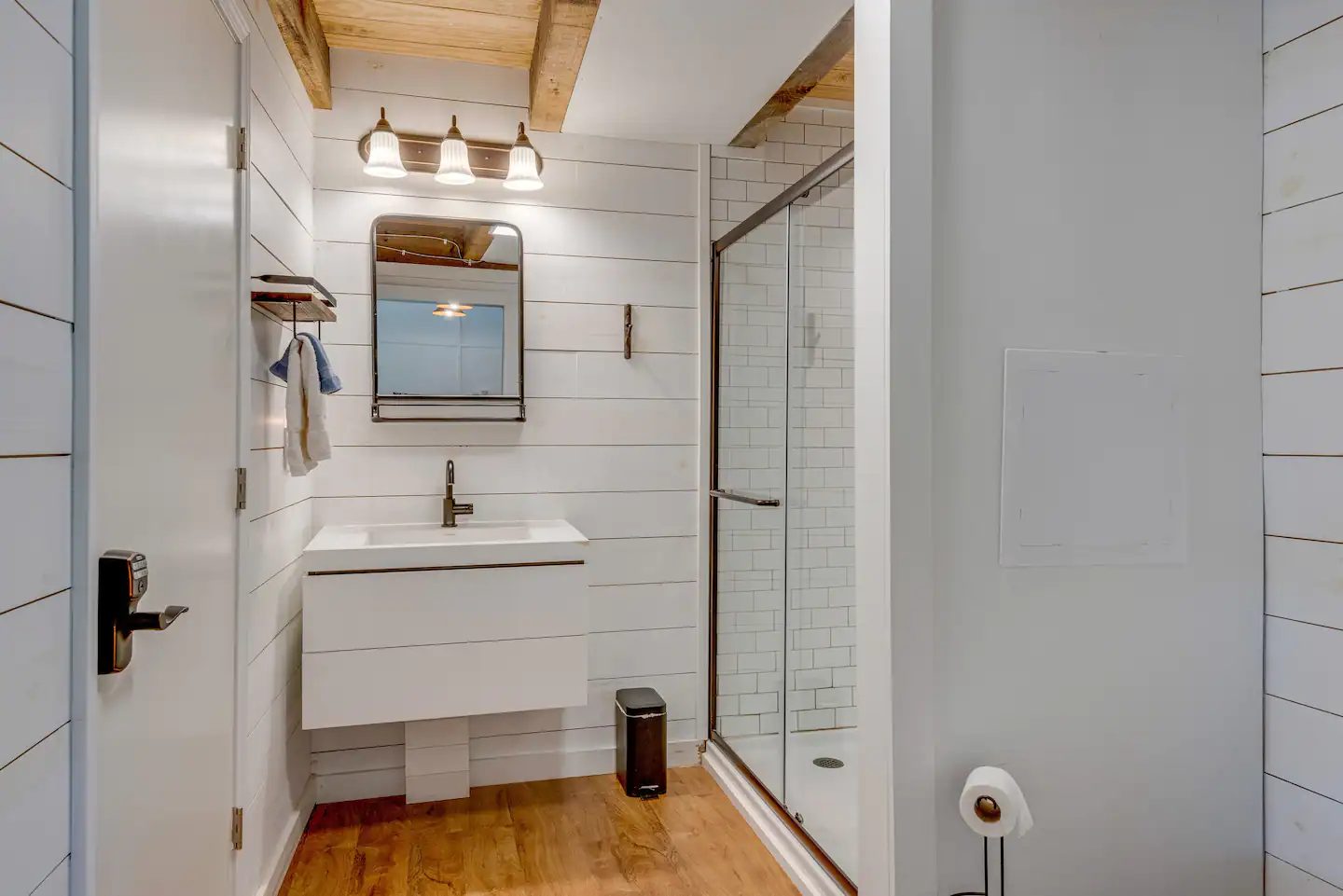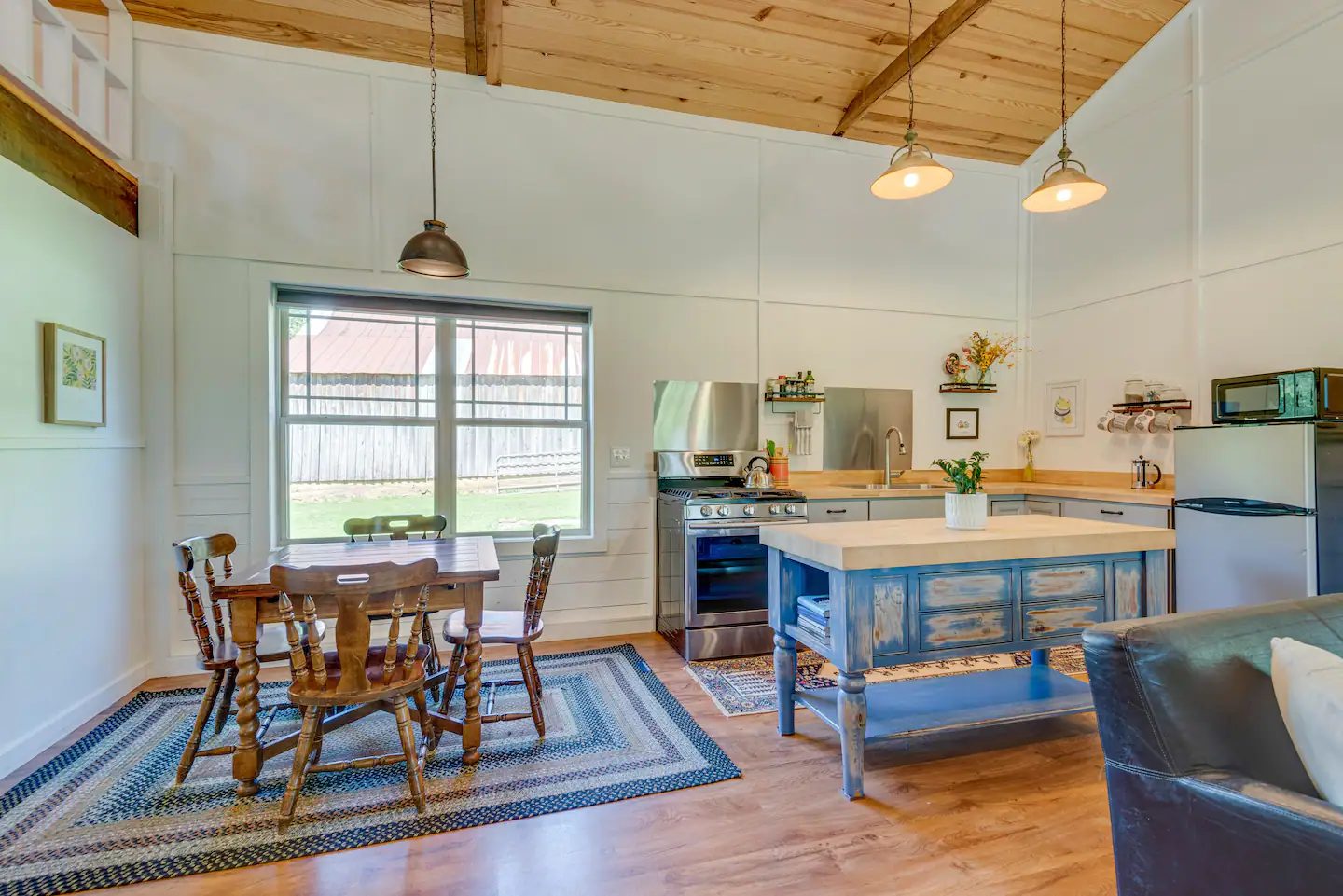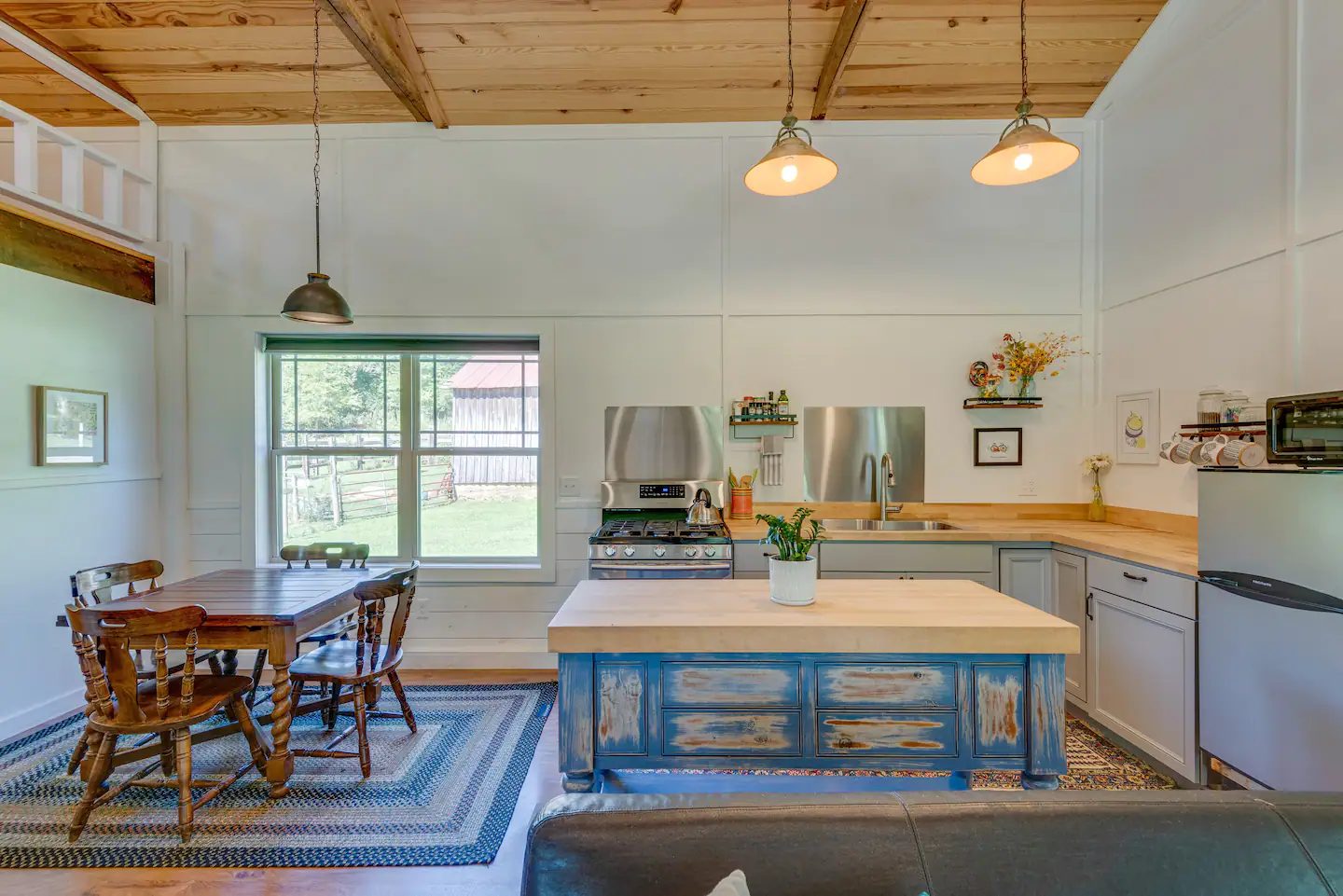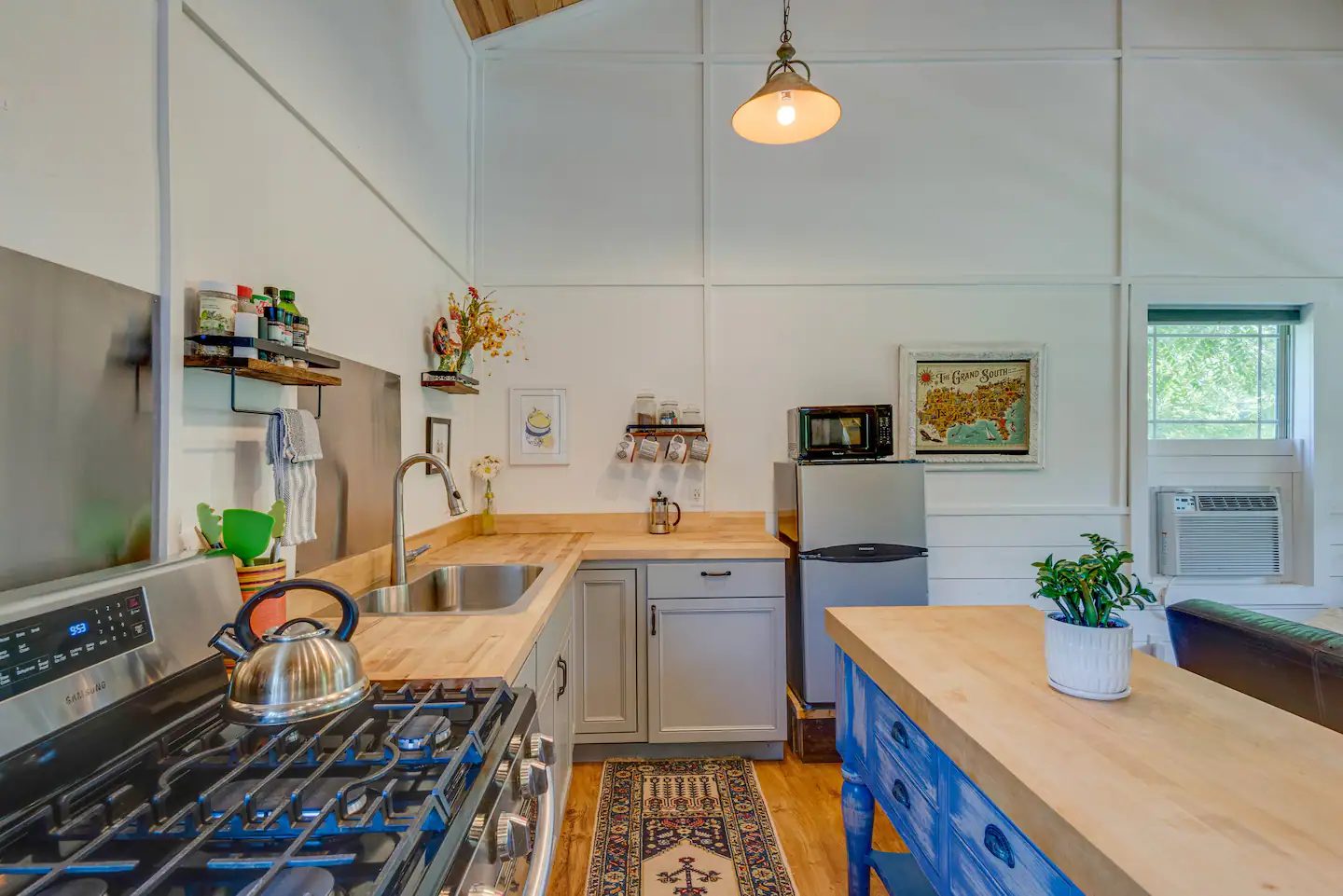Cottage by the Creek located in McEwen, Tennessee, United States is a 600-square-foot converted grain barn built in the early 1900s. The owners have converted the space into a light and bright one-bedroom, with a loft. There is a fully functional kitchen and custom bath with a tile shower. The 30-foot front porch offers views of the cattle farm across the street and the year-round flowing creek. The small cottage plan is just an hour from Nashville and 12 miles to the closest store or gas station. The cottage boasts a quiet and peaceful vacation getaway. There are pastures and an old Tennessee High Hay Hood Barn just behind the cottage with chicken and cows encircling it.
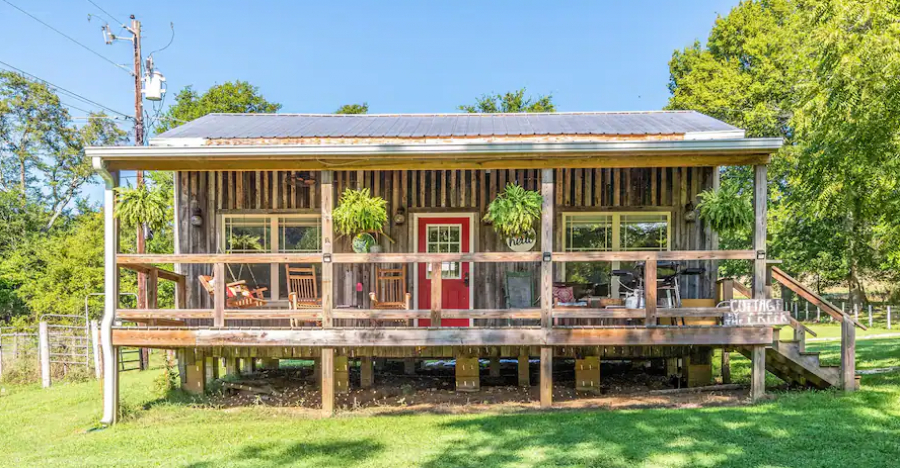
There is something about a barn that echoes the wide open countryside where you’ll find everything from freshly-painted, pristine barn structures to weather-beaten outbuildings that have seen better days, barns will take you back to the farm. Barns were once known as the cathedrals of the prairies, the iconic barn symbolizes both strength and independence. Today you’ll find many barns that have been given new life with use as barn-style homes. There are plenty of uses for barns whether it be for horses, hobbies, or storage, a custom barn when properly built will stand the test of time. When it comes to barn builds there are several frame options to choose from including post and beam, timber frame, and post frame.
Post and beam framing mimics the elegance of timber framing, though the joinery is less complex. The result of a post and beam barn is these beautiful timber structures have lower labor costs than their timber framing counterparts. Timber frame barns are a good option when you are going for the most stunning barn building possible, timber framing is the way to go. Post-frame barns are gorgeous, authentic wood barns on the outside and provide the perfect utility space on the inside. Post-frame buildings are a more visually appealing alternative to a cold, industrial metal buildings.
Barn designs have always been affected by the regional inherited customs and by the available building materials in the area. Building materials for barns were often timber, brick, and stone for exteriors, wood shingles, slate, and thatch for roofs. You’ll find barn styles to include Dutch, English, and Pennsylvania. Of the types of barns, the Pennsylvania barn is the most common except for the little English barn. The majority of Pennsylvania barns are sheeted in timber planks, but there are some examples in stone and more permanent building materials. However, it is not the barn construction that is important, but rather their form and function.
A typical barn site is one with a southerly exposure on rising ground. The barn is built with its great doors opening at the upper level onto what is called the threshing floor, which is a broad aisle flanked by stout, squared timbers in bays stretching from floor to ceiling. The granary, opening off the threshing floor is well-built in consideration of its contents, and is divided into 6 to 8 bins that are separated by a passage. At the close of the season, the threshing floor is filled with farm machinery. During the autumn and winter, hay is lowered by chute to the cattle below.

